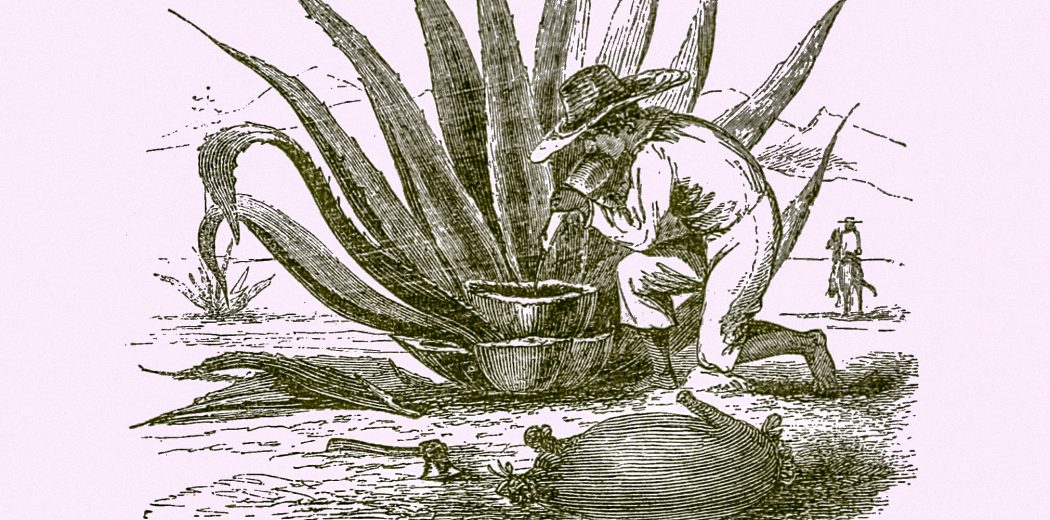At first glance, it doesn’t look all that appealing. It’s frothy. It could pass itself off as fermented milk. The texture certainly helps maintain that impression. It doesn’t benefit from being described as tasting sour and yeasty. But don’t be too quick to judge. This is sacred stuff. In fact, the Aztecs considered it the drink of the gods.
Pulque is produced from the sap of the maguey plant, or agave, which makes it a relative (a very, very ancient relative) of mezcal and tequila. However, pulque is created through fermentation, rather than distillation, a process that begins as soon as the plant is cut into and one which will continue even as you drink it.
*A brief tangent and reminder about the arduous process of actually getting sap from an agave plant: it can take up to 12 years for a plant to mature enough to produce any sap at all. That’s a long-term commitment.
The viscous drink’s origins lie at least 2,000 years ago when it was thought to be the cure-all to a variety of ailments. It was also thought of as the best preventative treatment to many more. Once at the center of religions, it was thought to address diabetes and intestinal disorders. It also was believed to be the source of probiotics, protein and crucial vitamins and minerals. It was administered as an aphrodisiac to sacrificial victims to make the whole business of being sacrificed a little less brutal. Expectant and breastfeeding mothers will even use it as a means to increase lactation.
At an alcohol content between 2-8 percent, usually erring on the lower side, pulque’s intoxication is just as untraditional as its taste. Your head will stay clear, and you’ll only notice just how many buckets you’ve had when you stand up and discover your legs aren’t working the way they’re supposed to. It’s also doesn’t cause hangovers which is a definite plus in our book.
It’s fallen into a kind of folklore status, but like all things that acquire mythology, it can seem more like part of the past than part of the present. In recent years, pulque has slowly lost its throne, slipping off of bar menus in favor of more popular beer.
Part of its disappearance may be due to a lack of advertising. Marketing companies pump money into beer, but pulque had relied on familiarity and tradition. Unfortunately, familiarity and tradition don’t go as far in a competitive marketplace. Since the 19th century, though, producers and bars have been serving up pulque curado, or pulque mixed with something like oatmeal or fruit to make it sweeter and more appealing to a new generation of drinkers. For the adventurous and the boozy, good news: there has been a brief resurgence thanks to a younger, hip crowd that see it as quintessentially Mexican and have begun making it their poison (or antidote) of choice.


